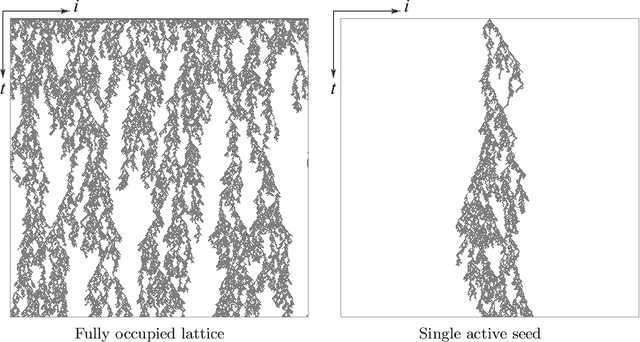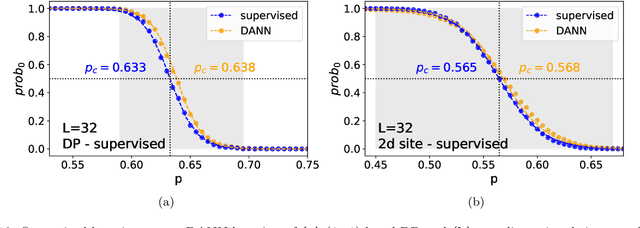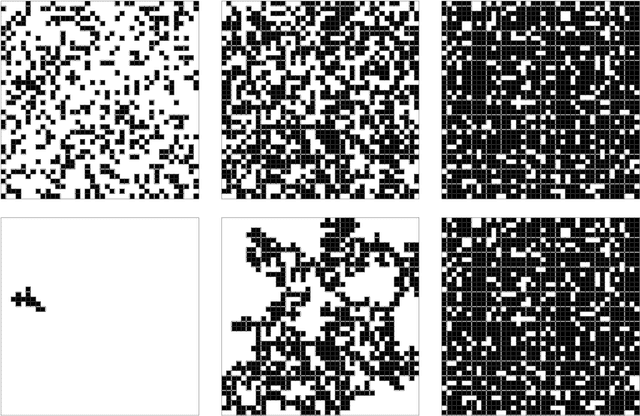Jianmin Shen
Unsupervised learning of site percolation based on shuffled configurations
Nov 20, 2023



Abstract:In the field of statistical physics, machine learning has gained significant popularity and has achieved remarkable results in recent studies on phase transitions.In this paper, we apply Principal Component Analysis (PCA) and Autoencoder(AE) based on Unsupervised learning to study the various configurations of the percolation model in equilibrium phase transition. In certain phase transition models, such as the DP model in non-equilibrium phase transitions, the order parameter is particle density. However, in some other phase transition models, such as the percolation model, it is not. This study involved randomizing and selecting percolation graphs to be used as input for a neural network, and analyzed the obtained results, indicating that the outputs of the single latent variable of AE and the first principal component of PCA are signals related to particle density.
Transfer learning of phase transitions in percolation and directed percolation
Jan 06, 2022



Abstract:The latest advances of statistical physics have shown remarkable performance of machine learning in identifying phase transitions. In this paper, we apply domain adversarial neural network (DANN) based on transfer learning to studying non-equilibrium and equilibrium phase transition models, which are percolation model and directed percolation (DP) model, respectively. With the DANN, only a small fraction of input configurations (2d images) needs to be labeled, which is automatically chosen, in order to capture the critical point. To learn the DP model, the method is refined by an iterative procedure in determining the critical point, which is a prerequisite for the data collapse in calculating the critical exponent $\nu_{\perp}$. We then apply the DANN to a two-dimensional site percolation with configurations filtered to include only the largest cluster which may contain the information related to the order parameter. The DANN learning of both models yields reliable results which are comparable to the ones from Monte Carlo simulations. Our study also shows that the DANN can achieve quite high accuracy at much lower cost, compared to the supervised learning.
 Add to Chrome
Add to Chrome Add to Firefox
Add to Firefox Add to Edge
Add to Edge